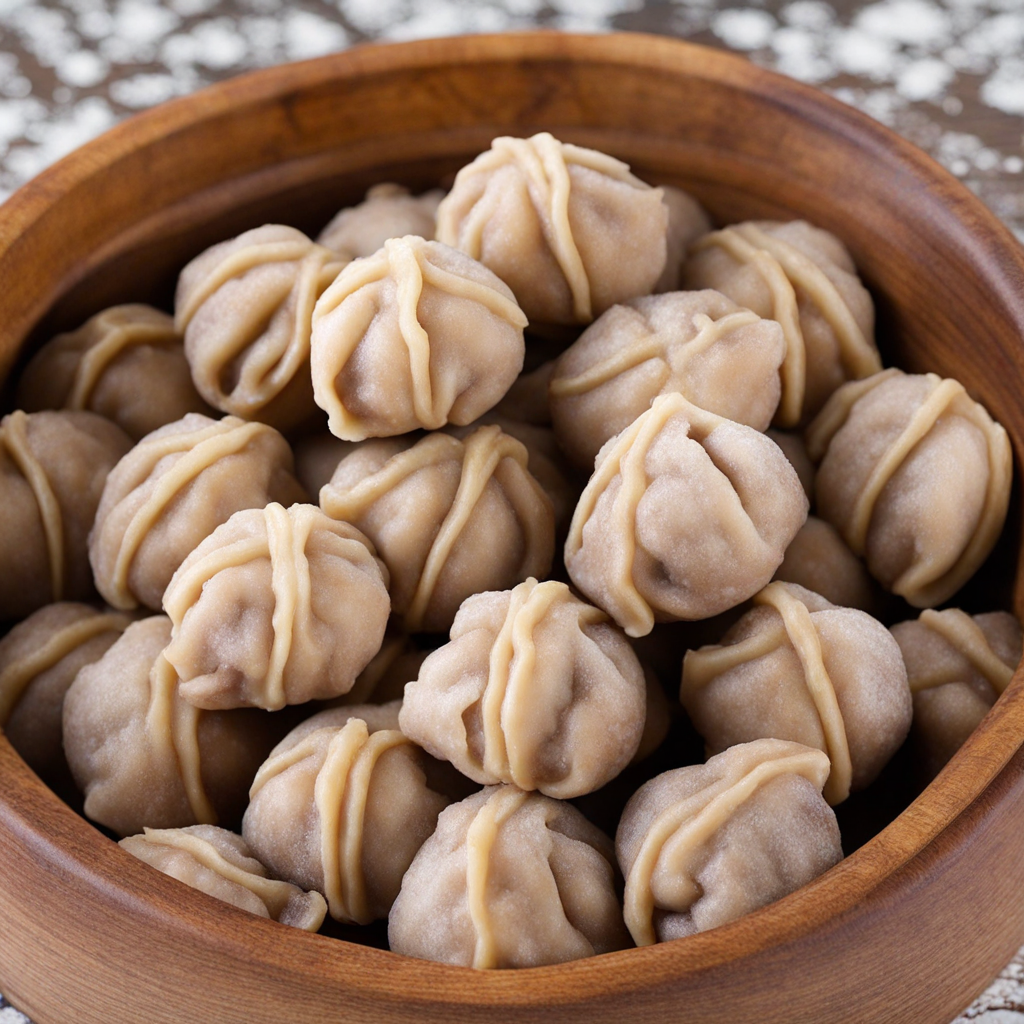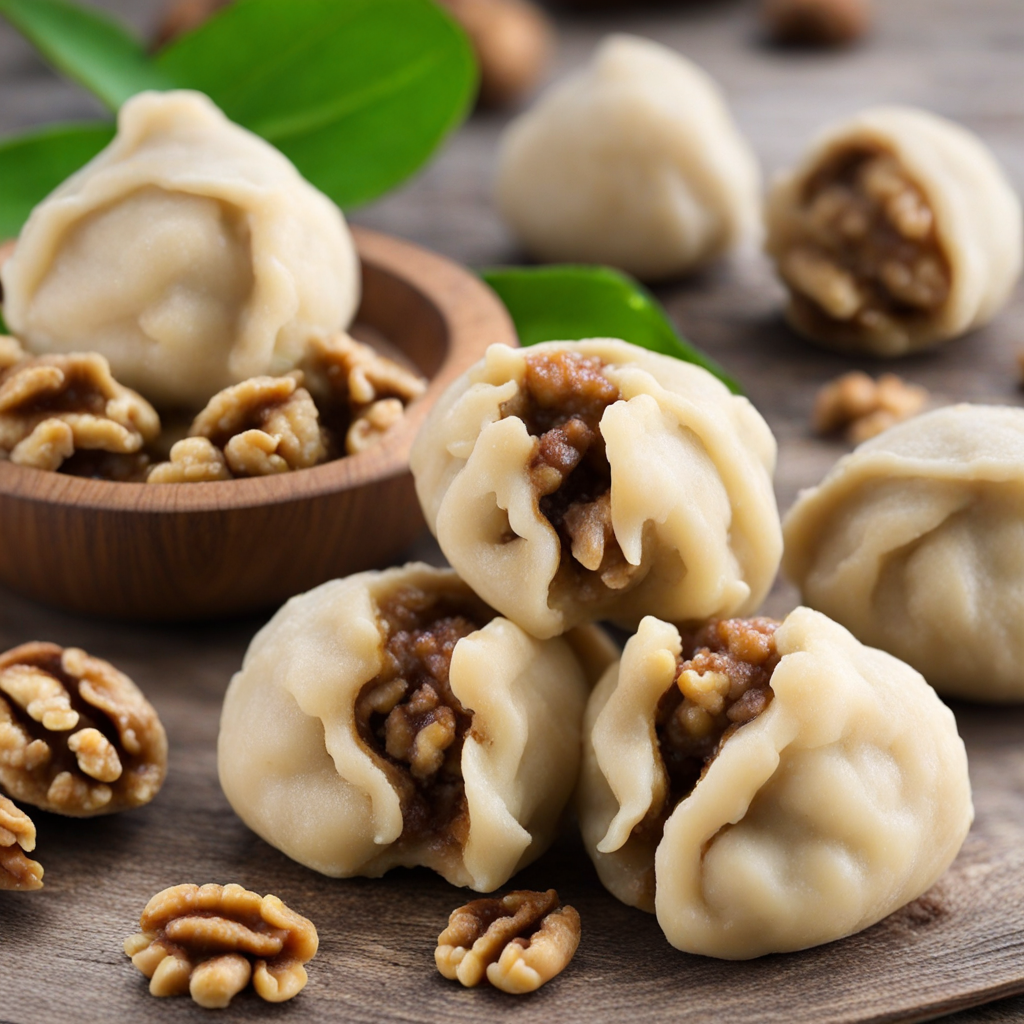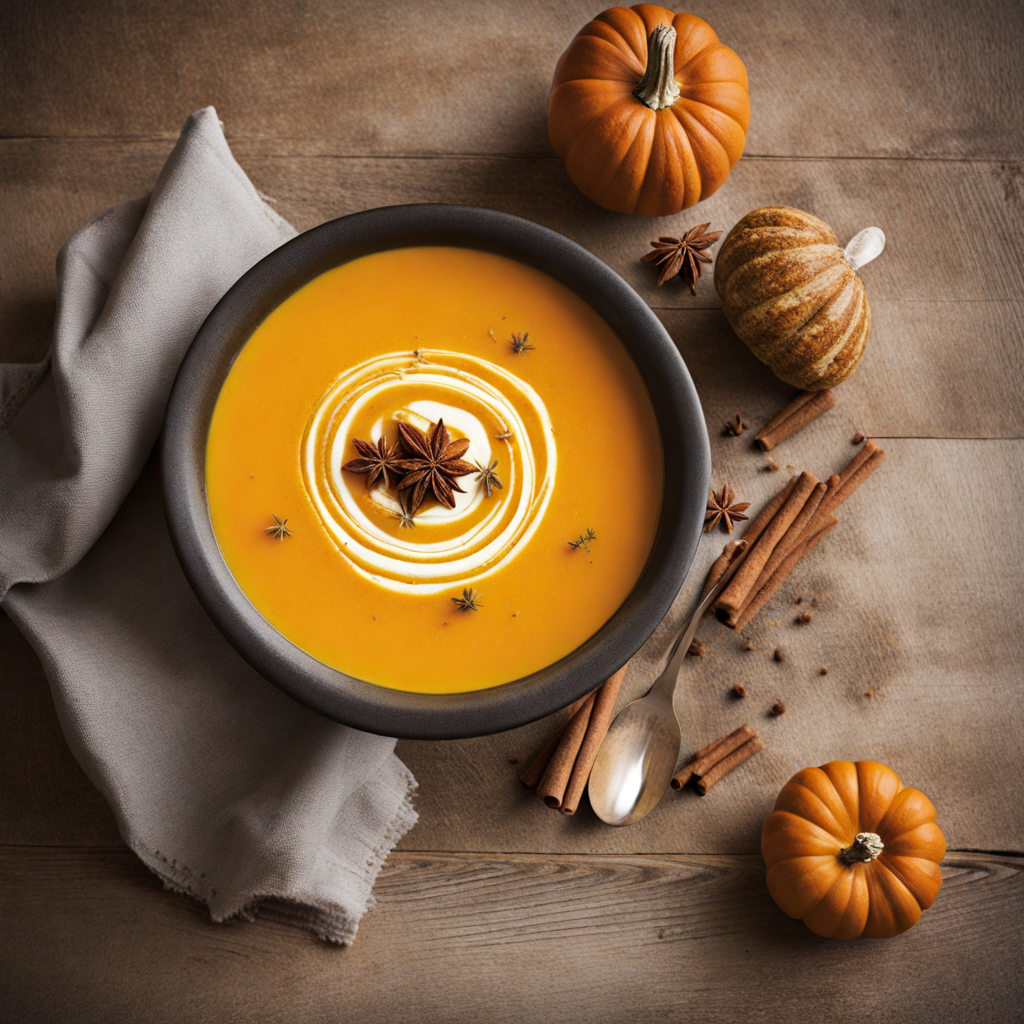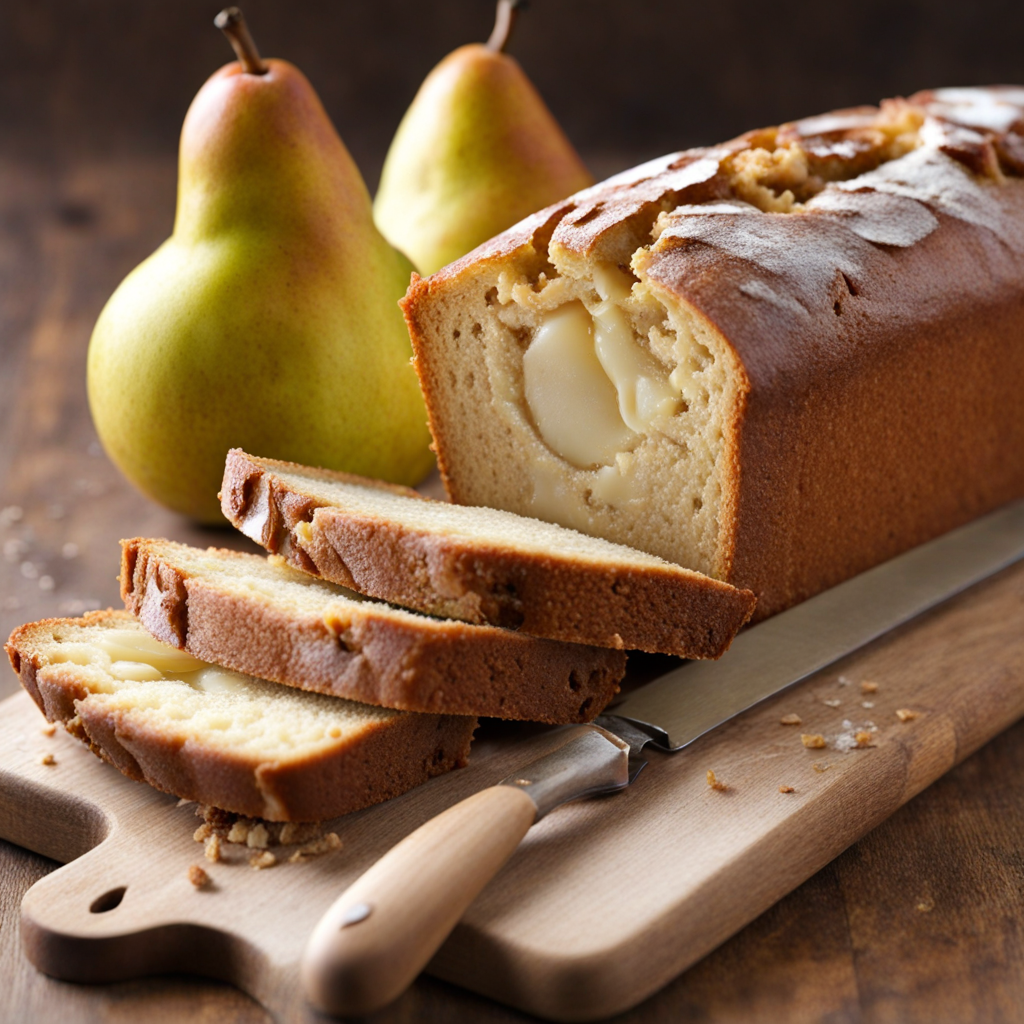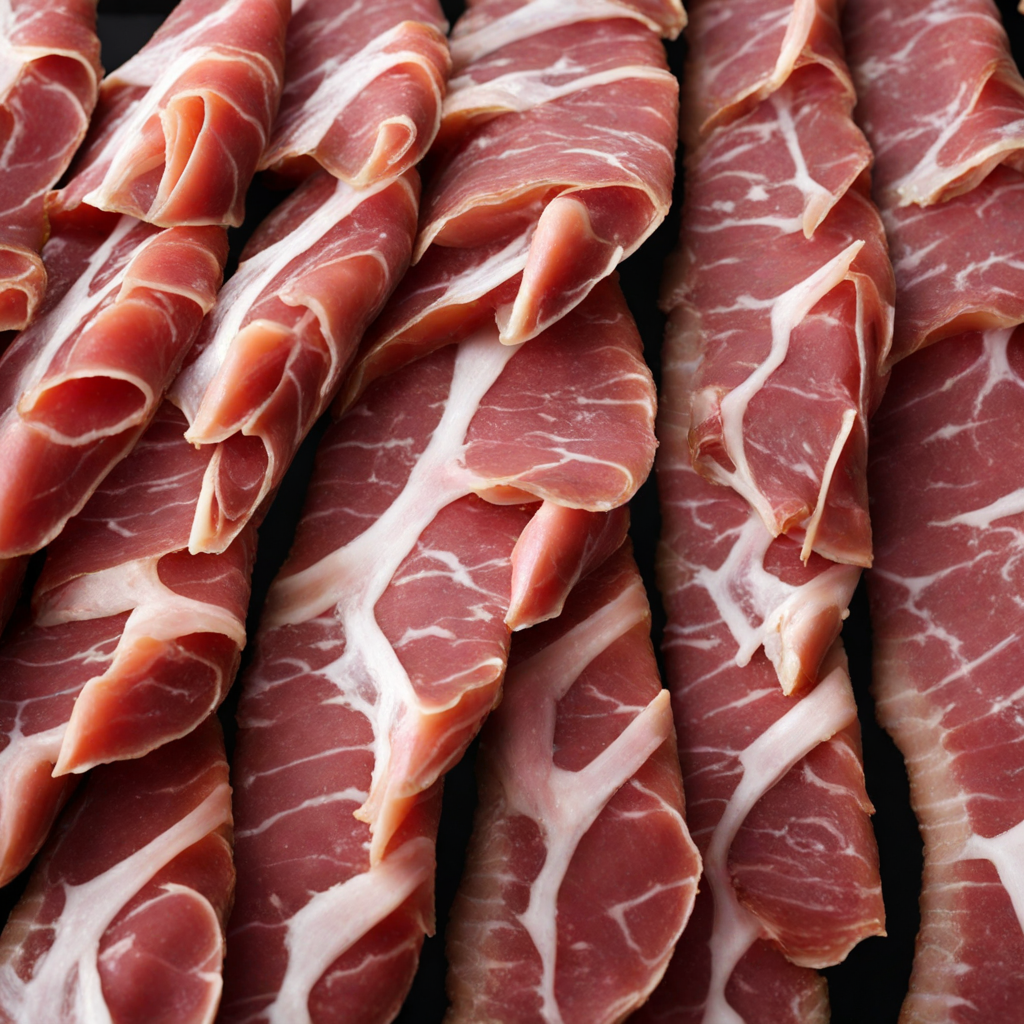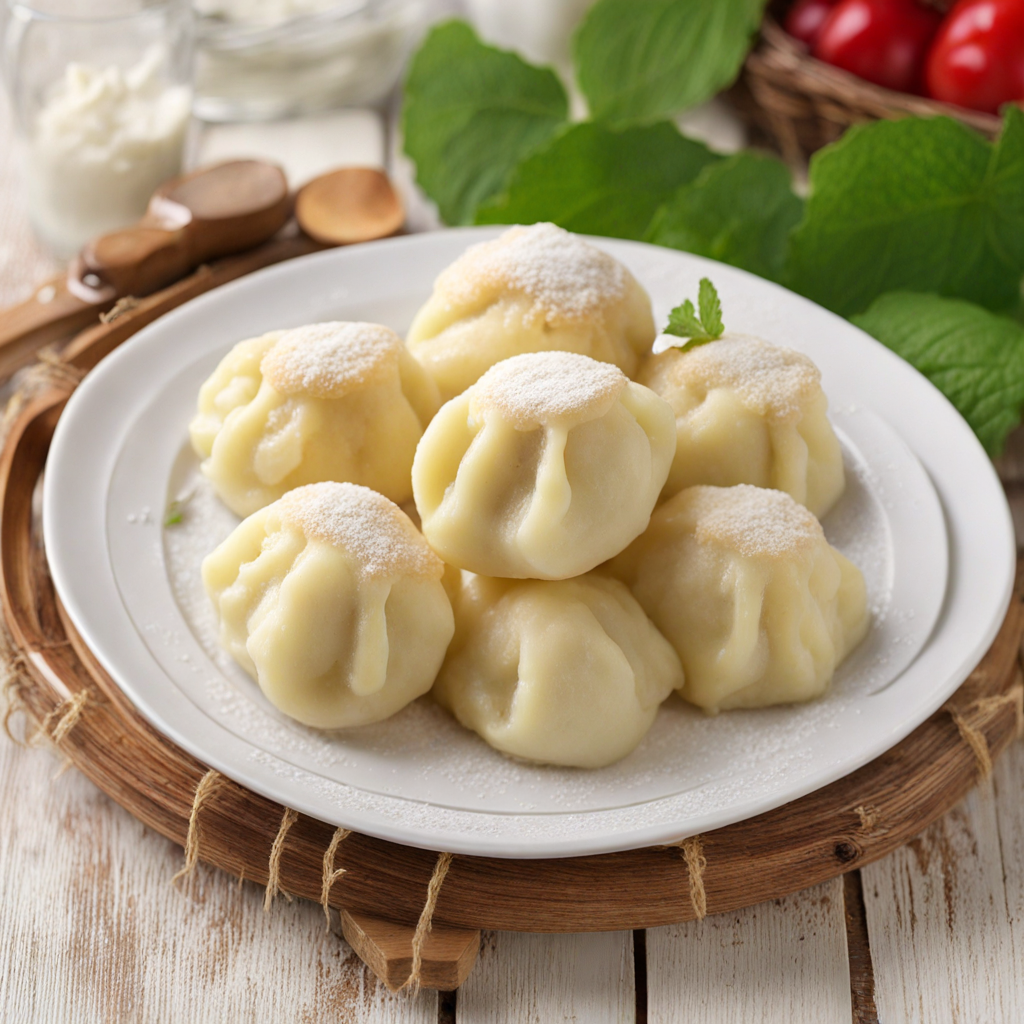Walnut Štruklji
Walnut Štruklji is a delightful Slovenian dish that showcases the rich culinary heritage of the region. This traditional pastry is made from a thin, stretchy dough, which is typically rolled out and filled with a generous mixture of ground walnuts, sugar, and sometimes a hint of cinnamon. The combination of these ingredients creates a filling that is both nutty and sweet, offering a comforting taste that is reminiscent of home-baked goods. The dough is often made from flour, water, and a touch of oil or sour cream to achieve the perfect texture, allowing it to be rolled out thinly without tearing. Once the dough is filled and rolled, the Štruklji is usually cooked by either boiling or baking. Boiling results in a softer, chewier texture, while baking gives it a slightly crispy exterior. After cooking, the dish is often served drizzled with melted butter and sprinkled with additional chopped walnuts, enhancing its flavor profile and providing a lovely visual appeal. The contrast between the tender dough and the crunchy walnut filling makes each bite a delightful experience. Walnut Štruklji is often enjoyed as a dessert or a sweet side dish, making it a versatile addition to any meal. It captures the essence of Slovenian cuisine, where simple ingredients are transformed into something truly special. Each bite is a celebration of flavor, texture, and the warmth of Slovenian hospitality, making it a must-try for anyone looking to explore new culinary delights.
How It Became This Dish
Orehovi Štruklji: A Culinary Journey Through Slovenia’s Heritage Nestled in the heart of Europe, Slovenia is a country rich in cultural diversity, reflected in its vibrant culinary traditions. Among its many gastronomic treasures, *orehovi štruklji* stands out as a beloved dish that encapsulates the essence of Slovenian heritage. Often translated as "walnut rolls" or "walnut strudel," this delightful pastry offers a glimpse into the historical tapestry of Slovenia, showcasing its agricultural bounty, cultural significance, and evolving culinary practices. #### Origins: A Taste of Tradition The roots of *orehovi štruklji* can be traced back to the broader family of *štruklji*, a traditional Slovenian dish that consists of rolled dough filled with various ingredients. The concept of rolled pastries has a long history in Central European cuisine, with variations appearing in neighboring countries such as Austria and Hungary. However, Slovenia's unique geographical and cultural landscape has given rise to its own distinctive interpretation. Historically, the dish is believed to have originated in the rural areas of Slovenia, where families relied heavily on locally available ingredients. Walnuts, a staple in Slovenian gardens, became the star ingredient due to their abundance and nutritional value. These nuts symbolize prosperity and are deeply embedded in Slovenian culture, often associated with harvest festivals and family gatherings. The use of walnuts in *štruklji* not only highlights the practicality of using local produce but also reflects the community-oriented spirit that permeates Slovenian food traditions. #### Cultural Significance: A Symbol of Togetherness *Orehovi štruklji* transcends mere sustenance; it is a symbol of togetherness and celebration within Slovenian families. Traditionally, it is served during festive occasions, family gatherings, and holidays, making it a dish that fosters connection and warmth among loved ones. The preparation of *štruklji* is often a communal activity, with family members gathering in the kitchen to roll, fill, and bake together. This collaborative spirit reinforces familial bonds and passes down culinary traditions from one generation to the next. In Slovenia, the act of sharing food is paramount, and *orehovi štruklji* plays a vital role in this social fabric. Its appearance on the table signifies hospitality and generosity, common traits among Slovenians. The dish not only nourishes the body but also serves as a vehicle for storytelling, as families often reminisce about their ancestors, their childhoods, and the significance of the ingredients used. #### Development Over Time: From Hearth to Kitchen The evolution of *orehovi štruklji* has mirrored the shifts in Slovenian society and its culinary landscape. While the traditional version consists of simple dough rolled with a walnut filling, modern interpretations have emerged, incorporating various flavors and techniques that reflect contemporary culinary trends. In the early 20th century, as Slovenia underwent political and social changes, the culinary scene began to evolve. The rise of urbanization led to changes in food preparation methods, with home-cooked meals giving way to convenience foods. Nonetheless, *orehovi štruklji* remained a cherished dish in Slovenian households, often prepared for special occasions or family gatherings, thus preserving its status as a cultural icon. The introduction of new cooking techniques and ingredients has led to exciting variations. Chefs and home cooks alike have experimented with adding spices, such as cinnamon or nutmeg, to the walnut filling, while others have incorporated chocolate or dried fruits for a modern twist. These adaptations reflect Slovenia's open-minded approach to culinary experimentation, while still honoring the dish's traditional roots. #### The Role of Festivals and Culinary Heritage Today, *orehovi štruklji* is celebrated in various food festivals across Slovenia, where it takes center stage as both a nostalgic favorite and a gastronomic delight. Events such as the *Štruklji Festival* in the picturesque town of Radovljica highlight the versatility and significance of this dish, showcasing countless variations prepared by local chefs and home cooks. These festivals not only celebrate the dish but also promote Slovenia's rich culinary heritage, drawing attention to the importance of preserving traditional recipes in a rapidly globalizing world. Moreover, Slovenia's commitment to sustainable agriculture and local produce has breathed new life into traditional dishes like *orehovi štruklji*. With a growing emphasis on farm-to-table practices, many chefs are now sourcing their ingredients from local farms, ensuring that the flavors are not only authentic but also support the local economy. This resurgence of interest in traditional Slovenian cuisine has led to a renewed appreciation for *orehovi štruklji*, as it embodies the principles of sustainability and community engagement. #### Conclusion: A Culinary Legacy *Orehovi štruklji* is more than just a delicious pastry; it is a reflection of Slovenia's rich cultural heritage, agricultural traditions, and the values of family and community. From its humble origins in rural kitchens to its modern interpretations in contemporary restaurants, this dish has transcended time and continues to be a beloved staple in Slovenian cuisine. As Slovenia embraces its culinary identity and promotes its traditional dishes, *orehovi štruklji* stands as a testament to the resilience of cultural heritage. It invites us to savor not only the flavors but also the stories and traditions that have shaped Slovenia's culinary landscape. Each bite of this walnut-filled delicacy is a reminder of the importance of connection—both to our roots and to each other—a legacy that will surely endure for generations to come.
You may like
Discover local flavors from Slovenia


